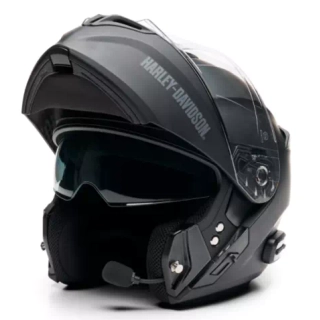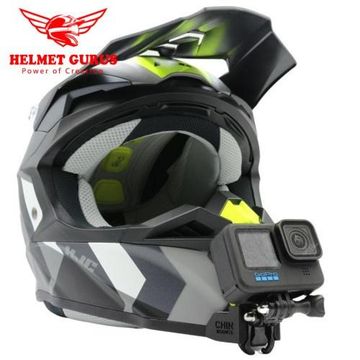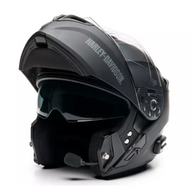
Full face motorcycle helmet vs modular helmet. Which one is for you?
A comparison.....
We scrutinize the merits and demerits of full-face Vs modular helmets. Which type should you keep? Read on The process of selecting the right motorcycle helmet isn’t always straightforward. Besides safety as your primary concern there are other features such as convenience. Thus, the hesitation to choose between a modular or a full-face helmet.
Full-Face Motorcycle Helmet vs Modular Helmet
Let’s face the truth. An ordinary full-face helmet, owing to its technical features, has a higher safety rating than a modular helmet.
Remember a flip-front helmet makes it possible to flip up the chin bar and expose your face amidst the ride. Such a provision comes in handy for instance during summer. Still, it proves comfortable to do so when making short leisure rides around town at low speeds
Regardless of the type of helmet you wear, the chief determinant of its quality is squarely the outer shell material, closure, and EPS padding.
Safety
When weighing out the best option between a full-face and a modular helmet, consider the lid's intended use and your primary concern. Overall, the lid should be made of top-quality, reliable materials and have a quality finish. The higher the quality, the better.
A full-face helmet gives a higher degree of protection. That’s because the outer shell is of solid material free from any aperture. And in the event of a fall or crash, you won’t experience a part of the helmet detaching from the shell.
But the best modular helmet with verified safety standards should also provide sufficient protection. What matters most is the type of material and finish given to the helmet. The mechanism of the chin bar connection also counts.
There are a few modular helmets that have dual homologation (P/J). Such a certification allows the helmet to be worn with the face shield in the open or closed configuration. You can browse through the site for such dual homologated motorcycle lids.
In all cases, we consider the type of closure the helmet features. A helmet’s strap is critical to your safety. When you fall or receive an impact the strap keeps the helmet from coming off your head.
At the same time, the double D ring closure has a tried, tested, and verified safety. However the micrometric closure feels more convenient, modern, and highly adjustable.
Which Type Has Better Noise Insulation?
Noise insulation counts among the critical features of a helmet. Between the two which type has a better score rating in noise performance?
Here the full-face helmet gives better insulation against noise. Do you know why? Its outer shell is void of any aperture and thus enjoys improved acoustic insulation. But still, the noise performance of a motorcycle lid is dependent on many factors. That includes helmet fit or size, external conditions, type of ventilation system, type of motorcycle you are riding, and even riding style. A naked bike feels noisier than one with a screen.
However, a modular helmet has a high possibility of possessing less insulation against noise compared to the full-face type. Therefore, settle on the top-quality flip-front helmet, don’t overlook its finish.
Conclusion
The big question therefore is should you choose a full-face helmet or a modular helmet. If your primary concern is safety, then go for a full-face helmet. Moreover, if you are fond of weekend getaway rides, it promises superior insulation.
But if you crave comfort and versatility, a modular helmet fits the bill. The helmet becomes ideal when riding around town too. Think of the joy and convenience of being able to flip the chin bar and refill gas at the station!
Without flipping up the lid it may force you to shout unintentionally when talking to the gas station attendant.
Frequently Asked Questions About Motorcycle Helmet Styles
Read on for the frequently asked questions or issues about different types of helmets.
1. How Does Helmet Style Affect Peripheral Vision?
The helmets come in various styles with diverse peripheral vision degree capabilities. Often full-face helmets have a lower peripheral vision angle than half or full-face helmets. Ideally you need the motorcycle lid that balances visibility and safety.
2. Does a Helmet’s Style Affect Hearing While Riding?
The design and style of a helmet influence your hearing capability. Full-face helmets that boast high noise reduction ability may give you muffled sounds compared to other helmets. Although low noise is beneficial, you need to stay alert of the traffic around you to avoid accidents. So it isn’t wise to secure a helmet that cuts you off completely from the sound around you.
3. Does Helmet Style Influence the Ease of Communication with Other Riders?
A helmet’s style is influential on the ease of communicating with other riders. For example, modular helmets often feature Bluetooth comm systems and hence provide seamless connectivity and communication with others.
Although open-face helmets also support easy face-to-face conversation they compromise on noise shielding ability.
4. How Do the Weights of Different Helmet Styles Compare?
Of all the types of helmets, full-face and modular helmets are the heaviest. The plenty of material used for their full coverage accounts for the high weight. On the other hand, half or open-face types use less material and thus are lighter and provide less protection.
5. Are Certain Helmet Styles Better for Particular Weather Conditions?
Sure. For example, in hot weather ventilation becomes a primary need. And so open-face or modular helmets are ideal. But in cold weather, full-face helmets give you maximum insulation. The cold wind hence finds less chance of infiltrating into the helmet.
6. How Does the Choice of Helmet Style Affect Fatigue On Long Rides?
The heavy helmet has a high possibility of inducing fatigue on you. That’s especially true for long rides. On that note, particular full-face or modular helmets weigh more than 4 pounds. Such heavy lids are likely to cause fatigue.
Light lids and helmets with better aerodynamic performance minimize neck strain and fatigue.



